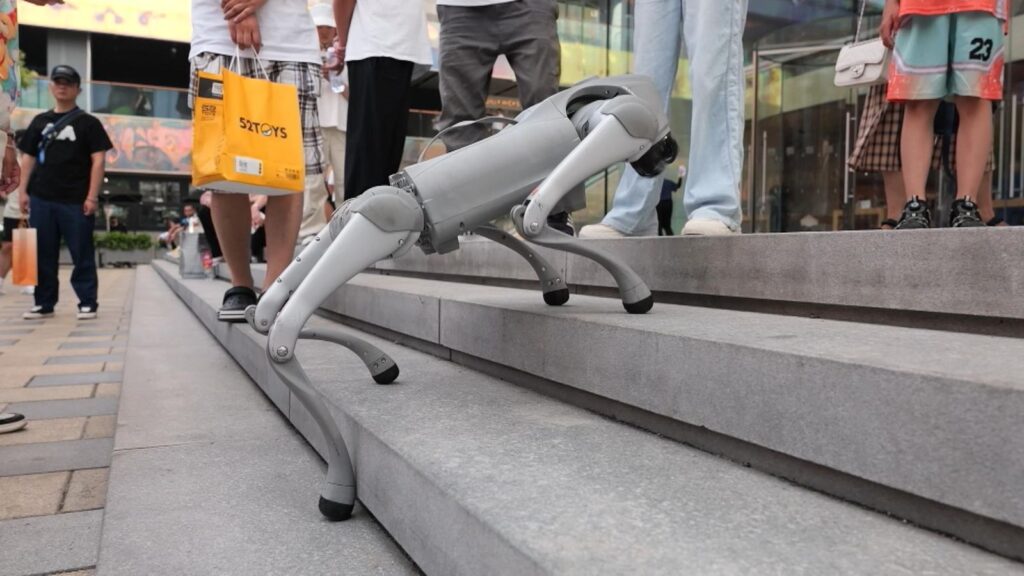Robotic dogs are becoming an increasingly familiar sight in China’s bustling cities, popping up from Beijing to Hangzhou. These mechanical canines navigate stairs with ease, tackle hills, and capture the imagination of onlookers wherever they go. However, their recent use in military exercises has sparked unease among the companies that create them.
In one of Beijing’s upscale shopping districts, tech enthusiast Josh Yuan demonstrates his robotic dog, effortlessly guiding it through crowds with a handheld remote. “I bought this for around £1,300 a few months ago,” he says, attracting the attention of curious passersby. “Right now, it’s mostly for people like me—tech geeks and programmers—but I believe that in the future, humanoid robots will become common household items once they become more affordable.”
China is home to dozens of robotics companies, with a few, like Hangzhou-based Unitree, focusing on robotic dogs. Unitree recently showcased their latest models, including a smaller dog suited for companionship or even dressed up in whimsical costumes like dragons or pandas. They also unveiled a larger, more powerful model capable of carrying supplies, navigating dangerous environments, or inspecting infrastructure.
However, in May, robotic dogs made headlines for reasons beyond their intended use. China’s state media aired footage of these machines, armed with weapons, being deployed in military training exercises. The video, showing the People’s Liberation Army utilizing these gun-wielding robots in drills with Cambodian forces, caught even the manufacturers by surprise.
“We found out about this video on the internet, just like everyone else,” says Duke Huang, Unitree’s marketing manager. “We had no prior knowledge of it.” Although these robots were not designed for military purposes, the footage ignited widespread concern. “Once a customer buys the dog, we can’t control how they use it,” Huang explains. “But we’re now considering ways to prevent military applications in the future.”
While drones have already become a fixture on modern battlefields, could robotic dogs be next? Unitree is skeptical. “The dog isn’t that smart—it’s still very basic,” says Huang. “It requires manual control to move. It doesn’t have a brain.”
P.W. Singer, a strategist at the U.S. think tank New America and an expert in 21st-century warfare, points out that “almost every advancement in AI and robotics within the civilian sector is being mirrored on the battlefield.” He notes that many applications of AI and drones in conflicts, such as those in Ukraine and Gaza, are direct extensions of civilian technology. “We’re just at the beginning,” Singer adds. “The technology we’re seeing now is like the early biplanes of World War I, compared to what aircraft would eventually become.”
For now, robotic dogs remain a novelty, often seen as high-tech toys rather than tools of war. Capable of running at speeds up to 16 miles per hour, performing tricks, and even barking in English or Chinese, these robots continue to fascinate those who encounter them. In China’s tech-centric cities, they inspire awe and wonder.
“When I first saw it, it felt magical,” recalls Hangzhou resident Silver. “I couldn’t believe my eyes.”
Yet as their potential applications broaden, so too do the questions about their role in society—and on the battlefield.
